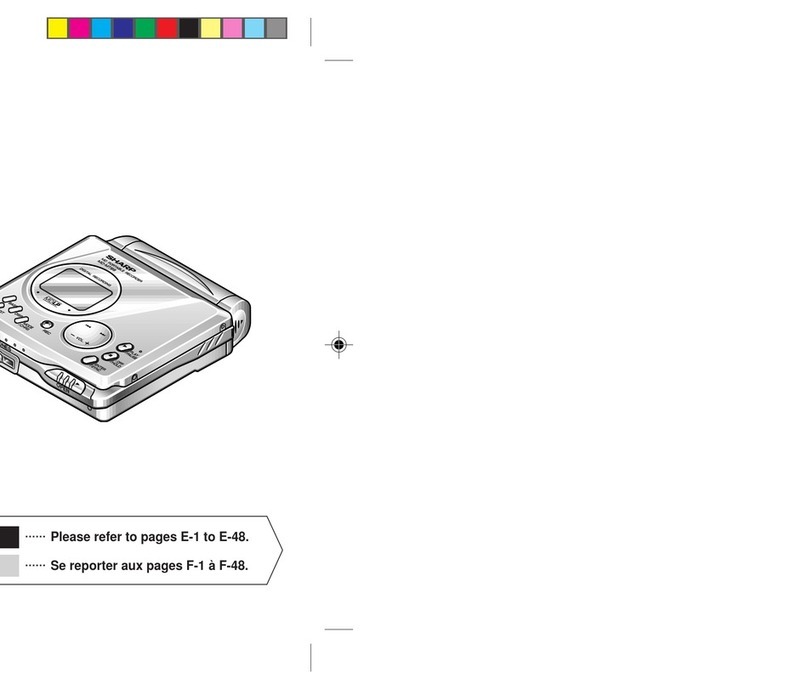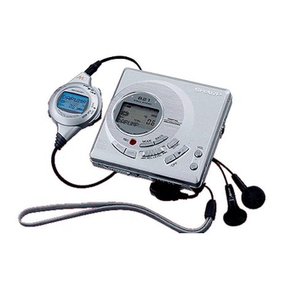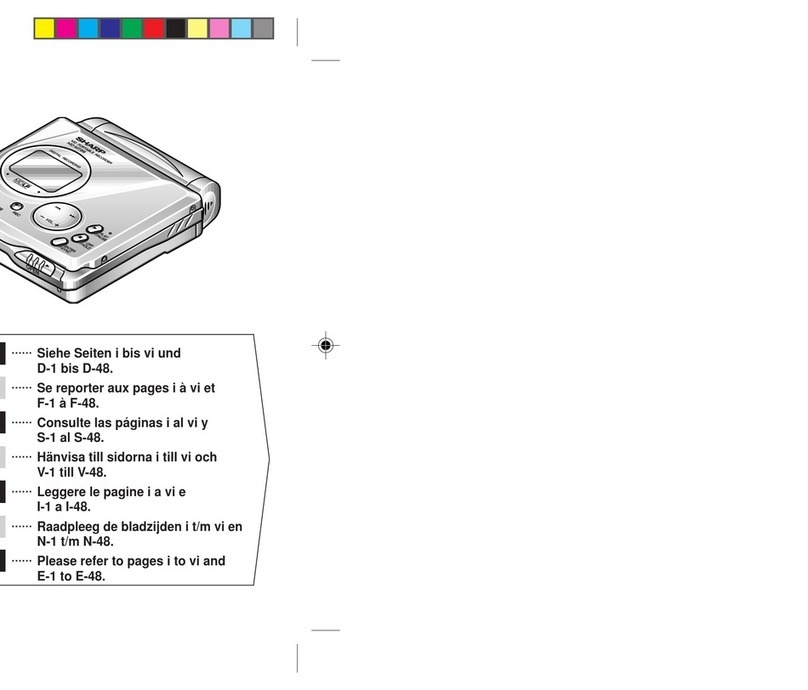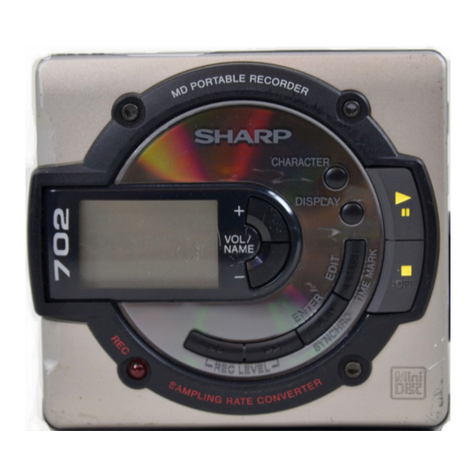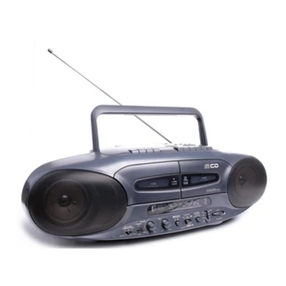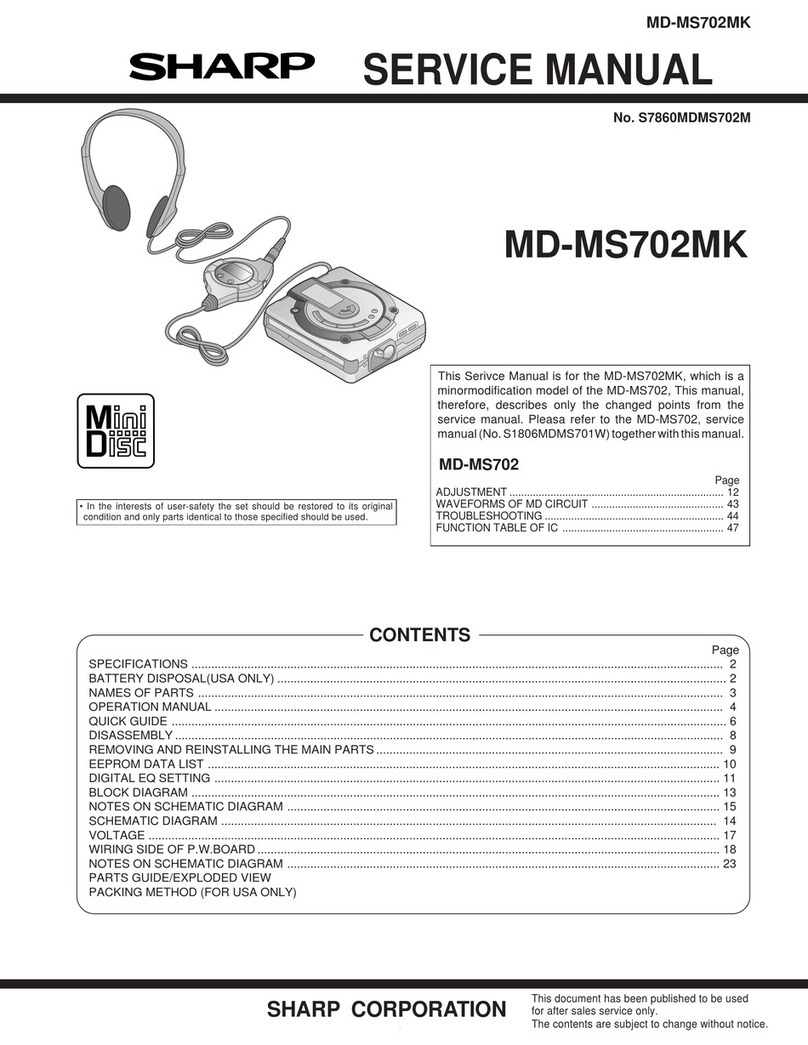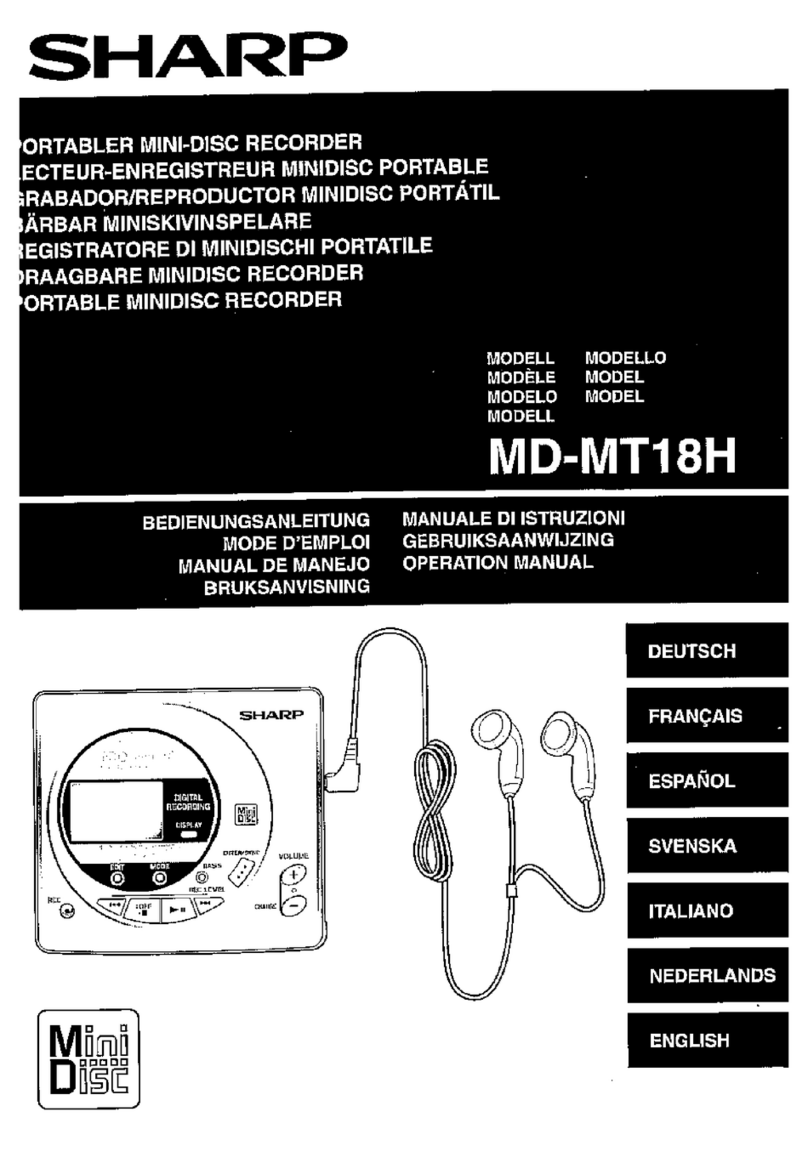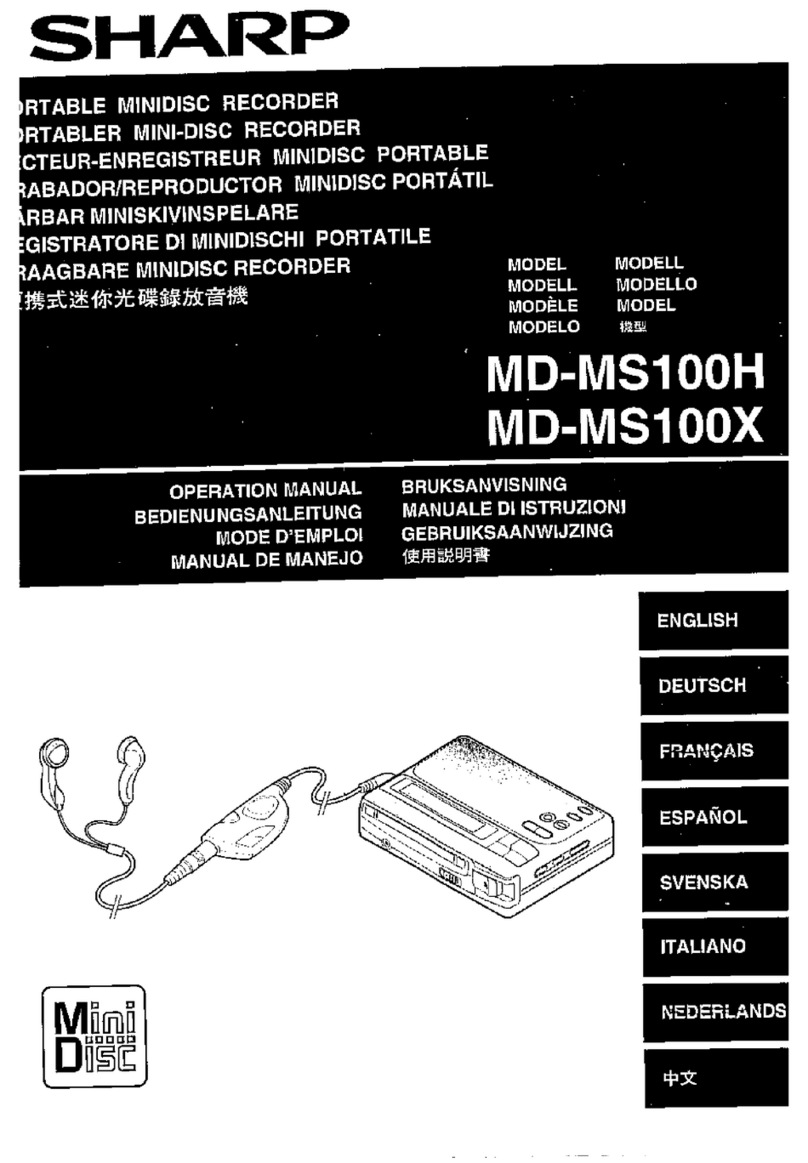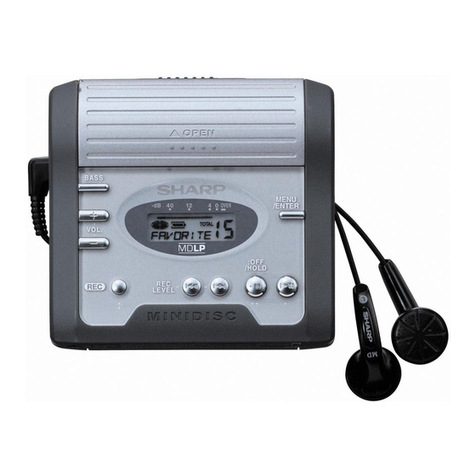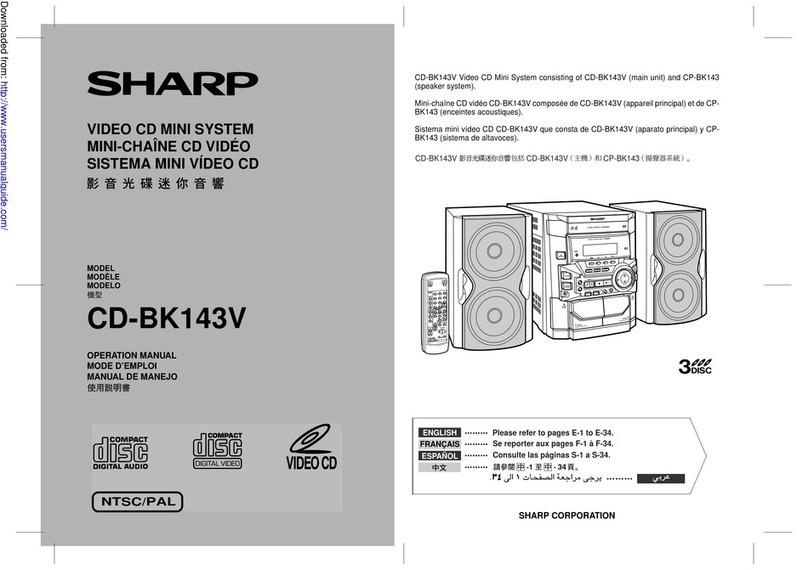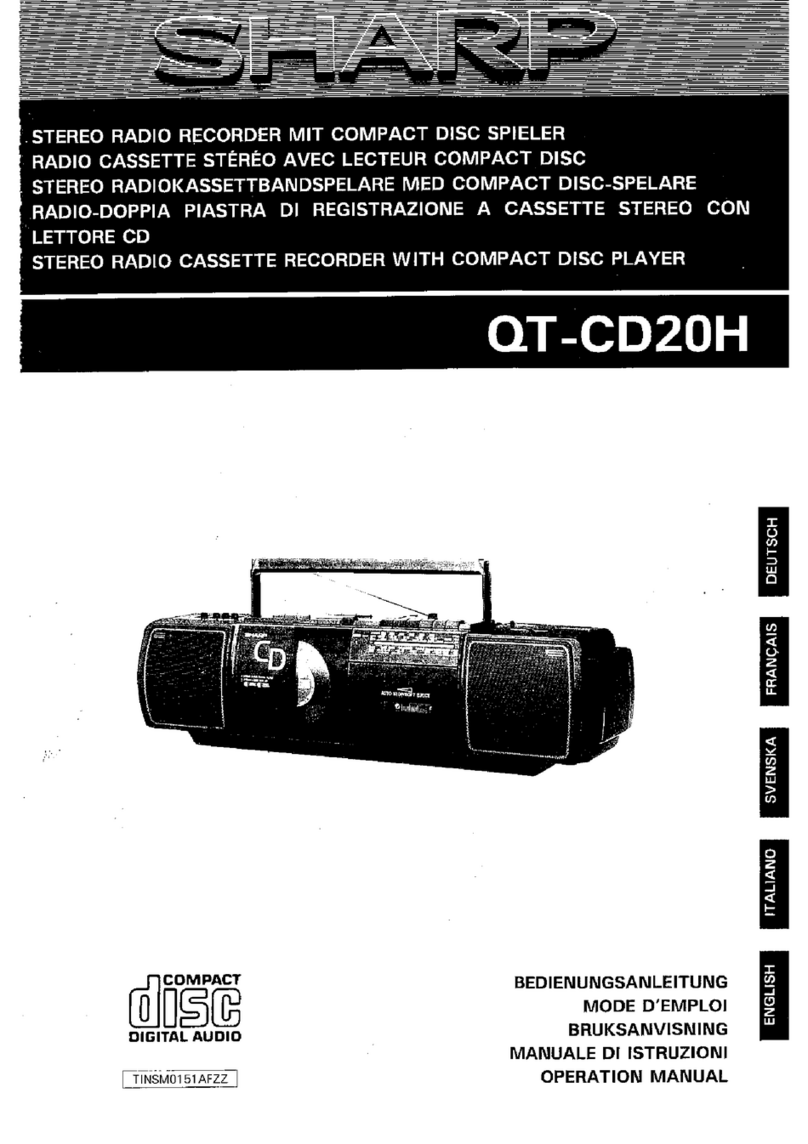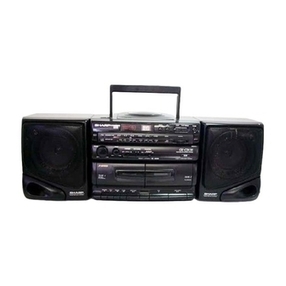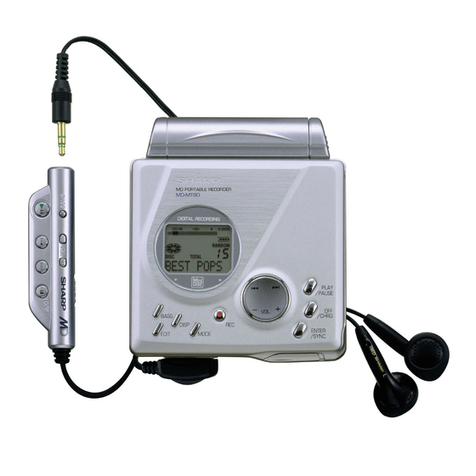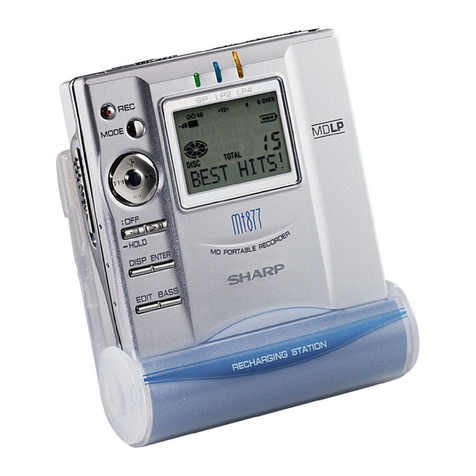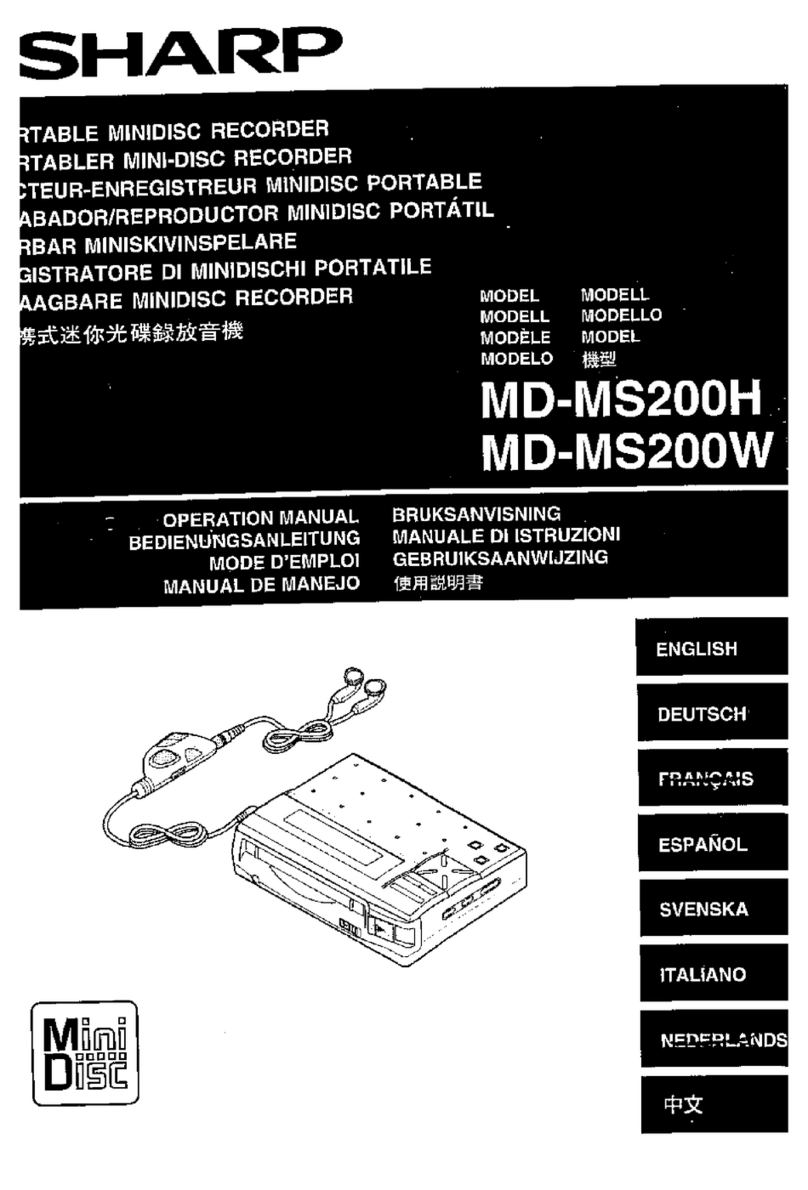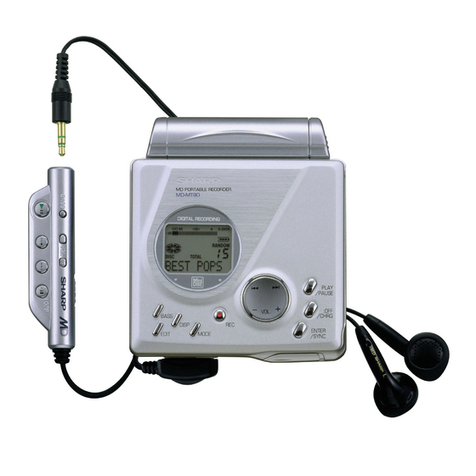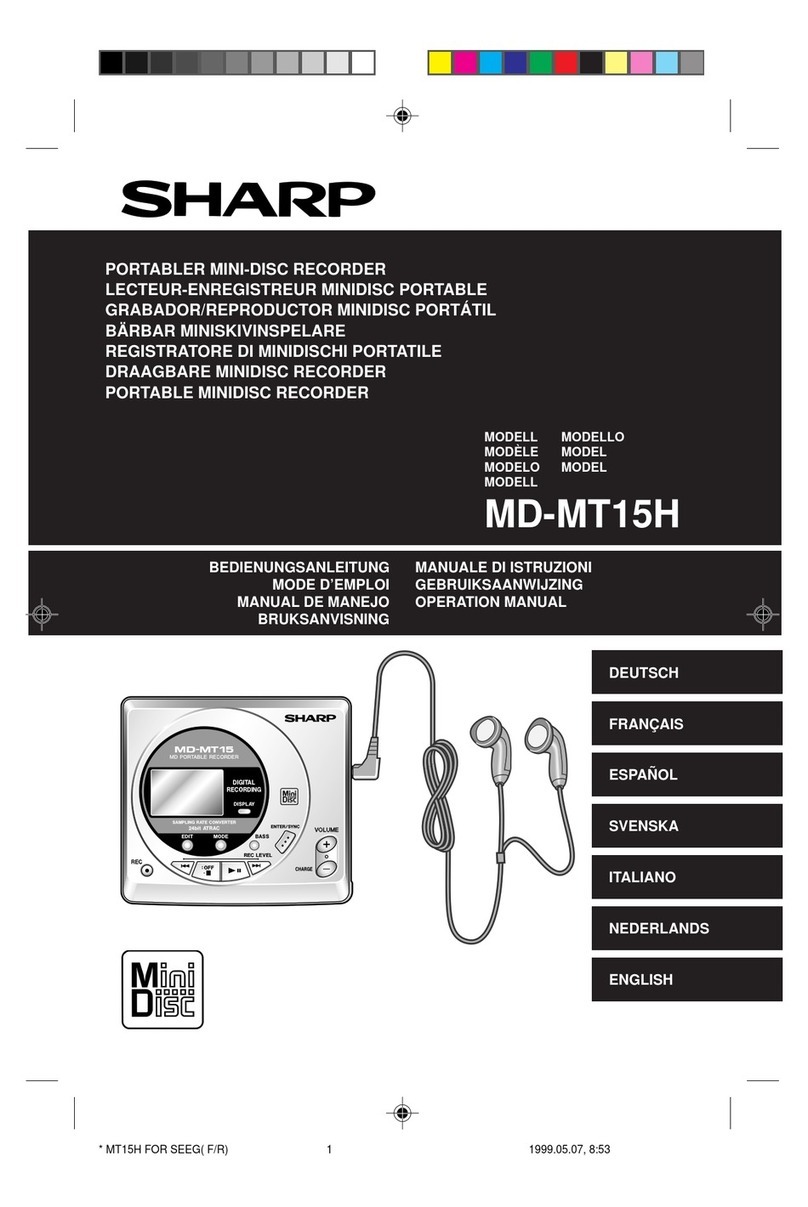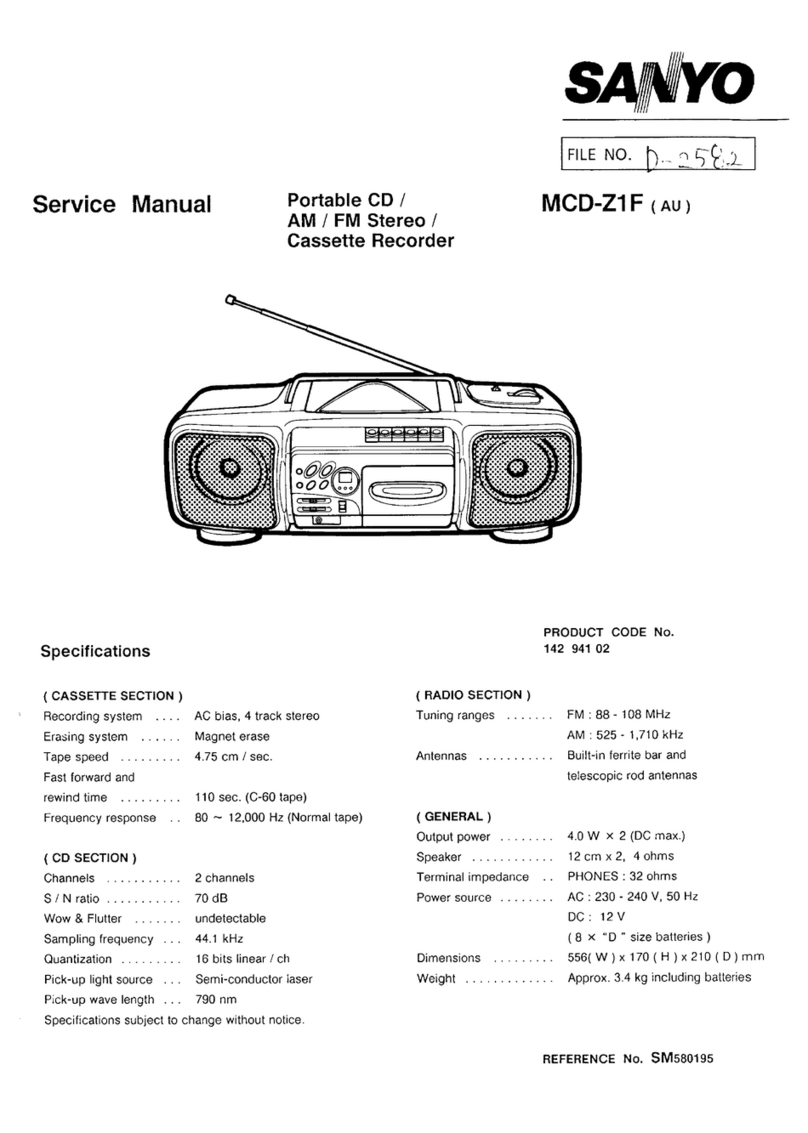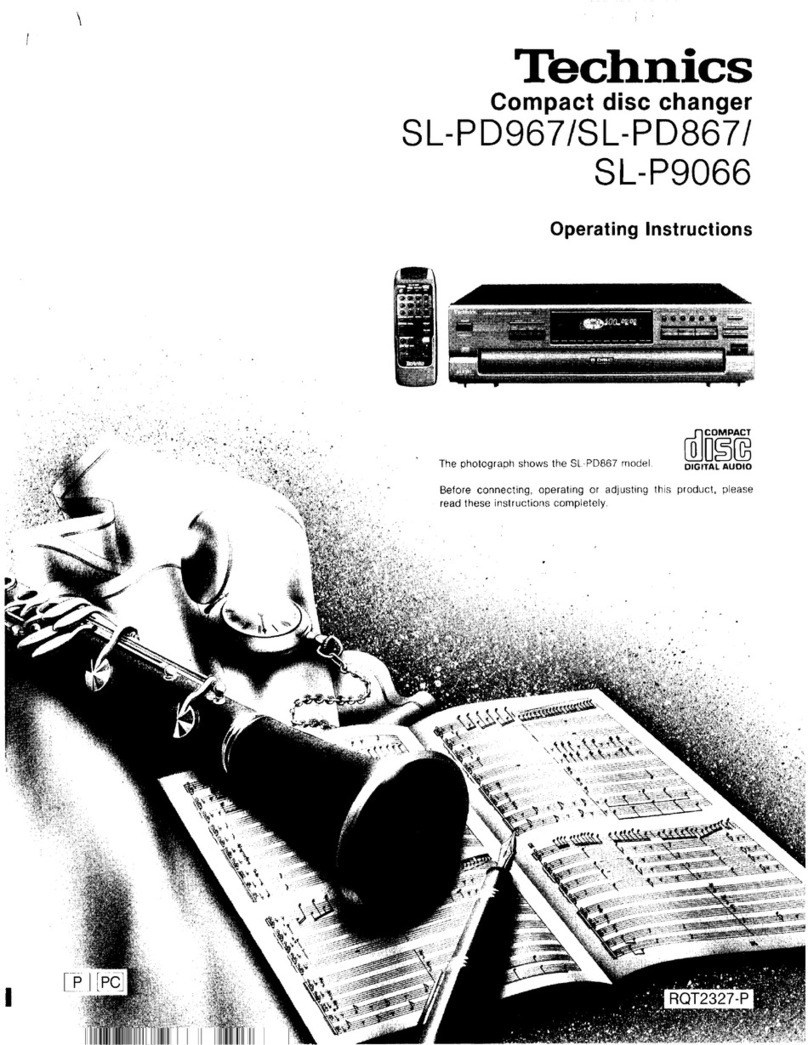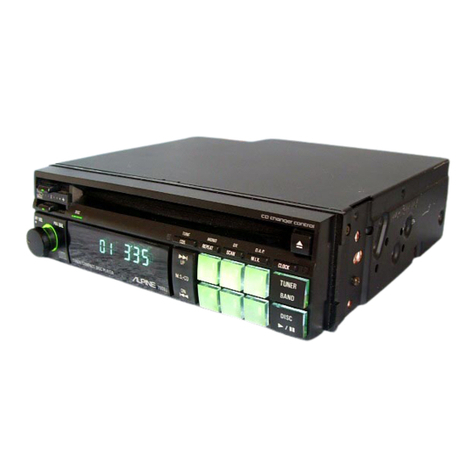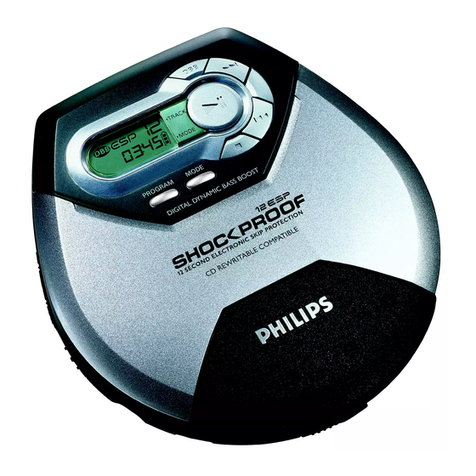
– 8 –
MD-MT180
Recording /
Grabación
Check that the unit is connected to the stereo system.
Compruebe que el aparato esté conectado al sistema estéreo.
1
Press the REC button.
Pulse el botón REC.
2
Begin playback on the stereo system connected to this portable MD.
Inicie la reproducción en el sistema estéreo conectado a este MD portátil.
3
Press the REC LEVEL 55
55
5or 44
44
4button
to adjust the recording level.
Adjustthe recording levelso that themaximumsound volumefrom the source makes
the reading swing somewhere between –4 dB and 0 dB.
Pulse el botón REC LEVEL
55
55
5
o
44
44
4
para ajustar el nivel de grabación.
Ajuste el nivel de grabación de modo que el nivel máximo de volumen del sonido de la
fuente haga que la indicación oscile entre –4 dB y 0 dB.
This unit can adjust the digital recording level just the same as the analog recording.
Este aparato puede ajustar el nivel de grabación digital del mismo mode que en el caso
de la grabación analógica.
4
Press the PAUSE button on the stereo system to enter the playback pause mode.
Here you can search for the track to record.
Pulse el botón PAUSE del sistema estéreo para establecer el modo de pausa de
reproducción.
Aquí podrá buscar la pista a grabarse.
Level meter indicator
Indicador del medidor de nivel
6Press the ENTER/SYNC button.
Pulse el botón ENTER/SYNC.
7Press the MENU/CHRG button repeatedly to select recording mode.
Pulse repetidamente el botón MENU/CHRG para seleccionar el mode de grabación.
5Press the MENU/CHRG button repeatedly to select the "REC MODE".
Pulse repetidamente el botón MENU/CHRG para seleccionar "REC MODE".
8Press the ENTER/SYNC button.
The mode will be set automatically after 7 seconds even if the ENTER/SYNC
button is not pressed.
Pulse el botón ENTER/SYNC.
El mode se establecerá automáticamente después de 7 segundos aunque no se pulse el
botón ENTER/SYNC.
9Press the 0606
0606
06 button to start the MiniDisc unit recording.
Pulse el botón
0606
0606
06
para iniciar la grabación del aparato de MD.
10
Begin playback on the stereo system,and the output will be recorded.
Inicie la reproducción en el sistema estéreo, y se grabará la salida.
To stop recording
Press the :OFF/HOLD button.
When “TOC” appears, the MiniDisc
recorded contents have not yet been
updated.
Para detener la grabación
Pulse el botón :OFF/HOLD.
Mientras aparece “TOC”, aún no se habrá
actualizadoelcontenido grabadoen el MD.
To update the recorded contents
of the MiniDisc
Press the :OFF/HOLDbutton when
in the stop mode.
The power turns off after recorded
contents have been updated on the
MiniDisc.
Para actualizar el contenido
grabado del MD
Pulse el botón :OFF/HOLD mientras
esté en el modo de parada.
La alimentación se desconectará
después de haber actualizado el
contenido grabado en el MD.
TOC display
Visualización
TOC
■■
■
■
Playback /
Reproducción
1Insert the earphones plug into the PHONES jack.
Inserte la clavija de los auriculares en la toma PHONES.
2Insert a MiniDisc.
Inserte un MD.
3Press the 0606
0606
06 button.
Playback starts automatically with a playback only MiniDisc or a MiniDisc
which is protected against accidental erasure (Auto-play function).
Pulse el botón
0606
0606
06
.
La reproducción empezará automáticamente con un MD de sólo reproducción o un
MD que está protegido contra borrado accidental (Función de reproducción
automática).
To stop playback
Press the :OFF/HOLD button.
If the unit is not operated for at least 2
minutes when in the stop mode, the
power will shut off automatically.
To the PHONES jack
A la toma PHONES
Right
channel
Canal
derecho
Left
channel
Canal
izquierdo
Para detener la reproducción
Pulse el botón :OFF/HOLD.
Si el aparato no se utiliza durante un
mínimo de 2 minutos en el modo de
parada,laalimentación sedesconectará
automáticamente.
■■

